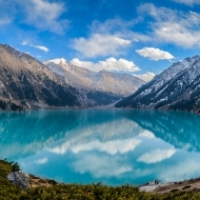Can Technology Solve California’s Water Problems?

A recent article on CNN.com looks at whether or not technology can be used to solve California’s water problems. As the piece points out, most Americans depend heavily on food from California.
Despite the water problems, water technology companies in California are almost non-existent unlike in other areas like Milwaukee where, due to the state’s heavy usage of water in the brewing industry, there are more than 150 water tech companies. So, can technology help California now and in the future? Let’s dig deeper.
Covered by CNBC.com, Israel Prime Minister Benjamin Netanyahu's visit to California resulted in a deal to create in California a new desalinization plant that would produce more than 50 million gallons of water a day.
When completed, this desalinization plant will be the largest in the Western Hemisphere. However, while the use of this technology is promising, the plant is still a few years away from being built. So, what's being done now to address the water crisis?
NASA has jumped on board to help with California’s immediate needs to conserve and protect the water resources it currently has. NASA is using satellite imagery to help California farmers learn about aquifers that might be tapped. Furthermore, the agency is advising California on current reserve projections that are based on snow melt, which could be a major source of water for the drought-stricken state.
Regarding other efforts to help with the water problem, California governor Jerry Brown announced initiatives to reduce current usage by 20 percent. One company, TaKaDu, offers technology to reduce the waste in water-delivery systems used by utilities.
Technology, which can be an answer to California’s water issues, is also somewhat responsible for causing the problems in the first place. For example, MIT Technology Review reports that solar-power generating plants may be partly to blame.
Although these plants generate electricity, they also use a large amount of water. Reducing the amount of water these plants use is expensive, and it will take time to implement water-saving measures, as the article points out.
No one knows when the drought in California will end, but we are all hoping that technology will pave the way for the future.
What do you think? Is it too little too late? Should this problem have been addressed before it reached this critical state?

